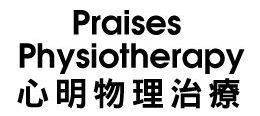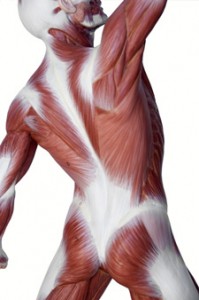|
Our Therapies
|
Myofascial Release (MFR)
What is fascia and why is it important ?
Fascia is a tough connective tissue, which spreads throughout the body in a three-dimensional web from head to toe without interruption. The Fascia is ubiquitous, surrounding every muscle, bone, nerve, blood vessel and organ all the way down to the cellular level. Generally, the fascial system is one of support, stability, and cushion. It is also a system of locomotion and dynamic flexibility forming muscle. Malfunction of the fascial system due to trauma, posture, and repetitive stress injuries, scarring, and/or inflammation can creat a binding down of fascia resulting in excessive pressure on nerves, muscles, blood vessels, osseous structures and/or organs. Tightening of the fascial system is a histologic, physiologic, and biomechanical protective mechanism that is a response to trauma. The fascia loses its pliability, becomes restricted, and is a source of tension to the rest of the body. The ground substance solidifies, the collagen becomes dense and fibrous, and the elastin loses its resiliency. Over time this can lead to poor muscular biomechanics, altered structural alignment, and decreased strength, endurance, and motor coordination. Subsequently, the patient is in pain and functional capacity is lost. What is MFR ? Myofascial Release is a whole body treatment approach. Its focus is the identification of restricted soft tissue, and the elongation of this foreshortened tissue. The goal of this treatment modality is the restoration of focal and global tissue health, and subsequent functional gains in movement quantity and quality for the patient.
How is MFR performed ? Myofascial Release is a hands-on soft tissue technique that facilitates a stretch into the restricted fascia. A sustained pressure is applied into the restricted tissue barrier, after 90-120 seconds the tissue will undergo histological length changes allowing the first release to be felt. The therapist follows the release into a new tissue barrier and holds, after a few releases the tissue will become soft and pliable. The restoration of length and health to the myofascial tissue will take the pressure off the pain sensitive structures like nerves and blood vessels, as well as restore alignment and mobility to the joints. What problems can MFR help ? MFR techniques are utilized in a wide range of settings and diagnoses; pain, movement restriction, spasm, spasticity, neurological dysfunction, such as : Cerebral palsy, Head and birth injury, CVA, Scoliosis, Menstrual and Pelvic pain and dysfunction, Headaches, Temporomandibular pain and dysfunction, Geriatrics problems, Sports injuries, Pediatrics , Chronic fatigue syndrome, Fibromyalgia, Traumatic and surgical scarring, Acute and chronic pain |







